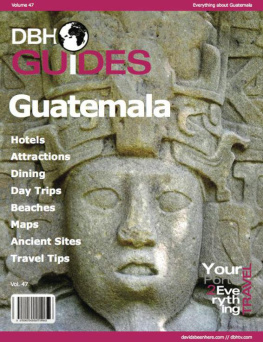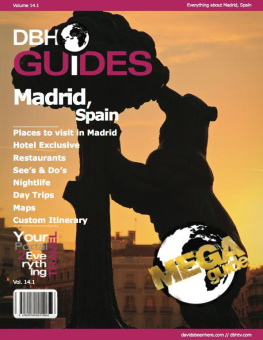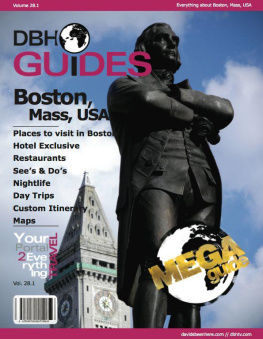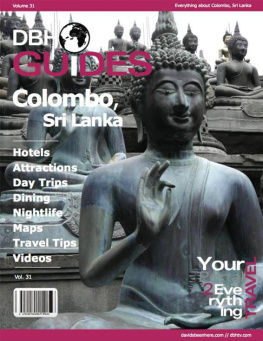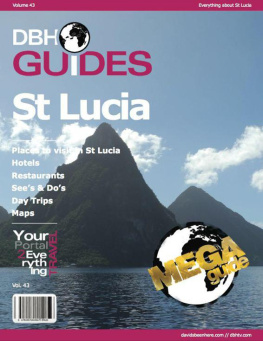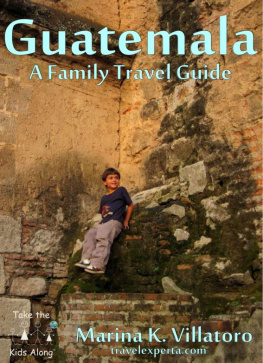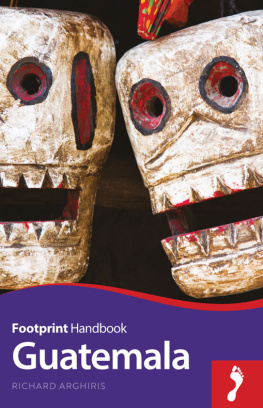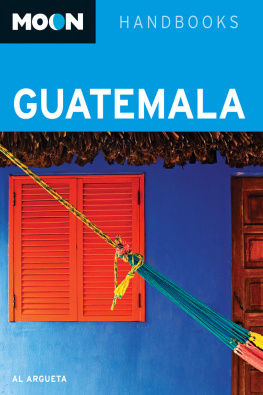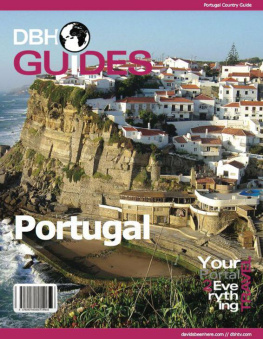Table of Contents
________________________
Guatemala Introduction
________________________

Located directly south of Mexico, Guatemala is the homeland of Mayan culture and history. The population is nearly 15 million and growing. Slightly smaller than the state of Tennessee, the country has a surface area of 42,043 square miles. Since the time of Spanish conquest, Guatemalas culture has developed into a mixture of Spanish and Mayan traditions, architecture, religious practices, and historical heritage. While the network of rainforest towns that once formed the heart of the Mayan empire were abandoned hundreds of years ago, Mayan descendants still inhabit the mountainous pueblos. In many of these rural areas, the indigenous languages of Kiche, Kaqchiquel, and Mam are still spoken. However, Spanish is the countrys main language and those travelers who speak even a little bit of Spanish will have a significantly easier time getting around. Regardless, those with a language barrier need not despair. The Guatemalan people are friendly, accommodating, and most will be patient and go out of their way to understand you and help whenever possible.
La comida tpica, or typical food, of the country is both rich and economical, with most dishes revolving around the local staples of maize and beans. Modern cuisines have developed through Mayan, Latin American, and Western influences. Due to the tourist presence in the country there are plenty of vegetarian options and even a few European, Chinese, and Middle Eastern restaurants.
The mountainous terrain causes a great deal of variation in climate and geography. Most of the mountains are volcanic, some are still active, and many can be hiked. The volcanic soil is extremely fertile and the geographic changes in altitude result in the numerous microclimates that grow rich produce year round. The lowlands are hotter and more humid with temperatures around 80 degrees Fahrenheit. With elevations as high as 8,000 feet, the highlands experience higher variation in temperatures. Visitors should remain conscious of the raining season between May and October, during which hiking is best avoided.
In addition to some of the best hiking and most beautiful natural surroundings in all of Central America, Guatemalans like to party. Guatemala hosts numerous cultural festivals throughout the year that lure visitors from near and far. Nearly every day of the year there is a party in a small pueblo, many of which pay homage to the local saint. Festivals are oriented around Mayan culture and tradition with customary dances, costumes, and music. Along the coast the population is mostly ladino , a mix of indigenous and Spanish blood. There, the fiestas pulse reggaeton, salsa and merengue, and host beauty contests and processions. Additional luring activities that Guatemala offers include SCUBA diving along the coast, white water rafting in the rivers that wind through the countryside, surfing, and fishing.
This guidebook is meant to be a fast-track reference and informative introduction to the countrys main attractions. Each chapter includes a brief description, main sights, activities, and day trips. For more information about travel to Guatemala, please visit www.visitguatemala.com.

Guatemala City
________________________

Guatemala City is the largest city in Central America with a population of over two million. The city itself, nicknamed Guate by the locals, is a polluted industrial chaos with minimal tourist attractions. With that being said, its the transitional point in the country and the cosmopolitan hub of Central America. Guate is home to the main airport and the starting point for most bus routes serving smaller towns, so you will inevitably spend at least a little bit of time here. When passing through, make time to see the city. It is worth staying over for a couple of days to get oriented, check out some of the museums, see the noteworthy architecture, and sample the local gastronomy. In recent years, efforts have been made to conserve and restore certain faded historical landmarks to their former glory. Progress is slow but the determination of a few conservational enthusiasts is cause for hope.
The outskirts of the city are home to numerous run down shanty towns, but the surrounding areas are overflowing with beauty. Pristine meadows and quiet pine forests line the countryside amidst the countrys volcanoes.
Attractions
________________________
Catedral Metropolitana

La Catedral Metropolitana, or Metropolitan Cathedral, is an earthquake resistant neoclassical structure. The cathedral is a true work of art that took 86 years to complete! This majestic, blue-domed cathedrals interior features stone floors, colonial paintings and adorned with sprinkles of gold. The most notable characteristic is the impressive entrance of the cathedral, which is framed and supported by 12 pillars inscribed with hundreds of names of victims of the Guatemalan civil war that took place from the 1960s to 1996. Religious icons and carvings embellish the interior. The cathedral is centrally located in Plaza de Armas, the main square, a major meeting point and the epicenter of all sightseeing in the city. La Catedral Metropolitana can be toured in approximately 20 minutes.
Hours of Operation:
Saturday to Sunday 8 a.m. to 8 p.m.
Admission: Free
Info:
8 th St and 7 th Ave
Palacio Nacional de la Cultura

Once the Presidents headquarters, Palacio Nacional de la Cultura, or the National Palace of Culture, is a significant architectural monument and arguably one of the most beautiful buildings in the country. The National Palace as it stands now was constructed between 1939 and 1943. Today it serves as a museum and still hosts important government meetings. Some of the best local art of the 1940s is housed here. The palaces total surface area amounts to 29,167 square feet. The design is a combination of Guatemalan, French, and neoclassic influences. Reservations are unnecessary unless you are in need of a guided English tour, in which case you should call in advance. The average visit takes approximately 30 minutes.
Hours of Operation:
Saturday to Sunday 9:00 a.m. to 12:00 p.m. and 2 p.m. to 5 p.m.
Admission: Q40 foreigners, children under 12 get in free
Info:
6 th St between 6 th and 7 th Avenues, Zone 1
(+502) 7832-2153
National Archaeological Museum

The National Archaeological Museum, or El Museo Nacional de Arqueologa y Etnologa, houses one of the best collections of Mayan artifacts in Central America and is one of the most significant displays of Mayan culture. A visit is highly recommended if you can afford the time. Information pertaining to the displays is extensive, unfortunately most of the information is in Spanish. Noteworthy exhibits include jade masks from Takalik Abaj, prehistoric archeology, and a 672 AD Stela 12, a commemorative stone slab, depicting a captive king pleading for mercy. The museum is essential to understanding the connection between ancient and present-day Mayan culture.
Next page
